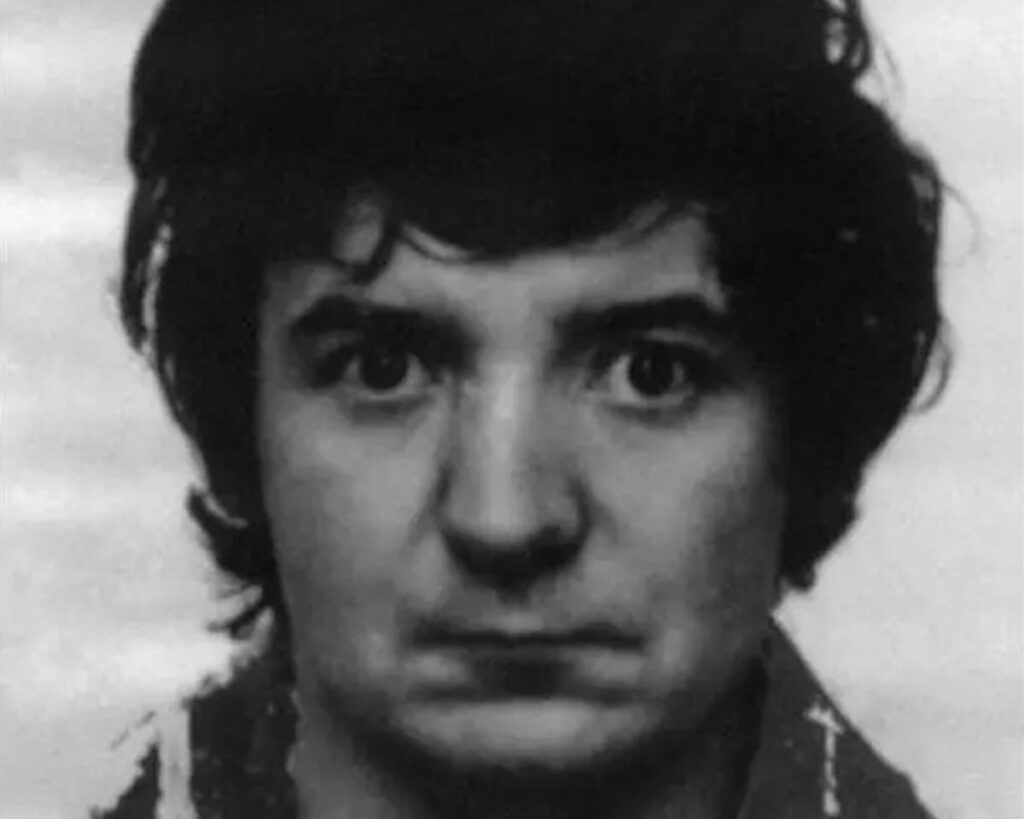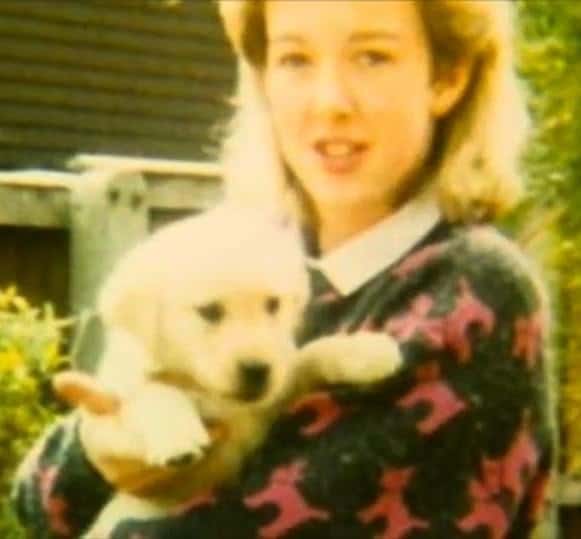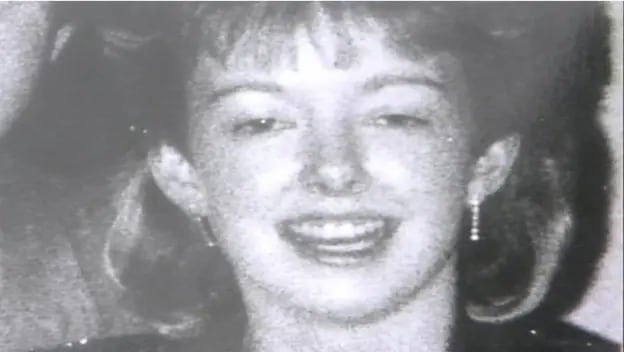Warning: Some details in this true crime story are graphic in nature.
Sullivan had maintained his innocence throughout nearly four decades of imprisonment for the brutal murder of Diane Sindall, a 21-year-old bride to be who was killed in Birkenhead, England on a summer night in 1986.
The path to Sullivan’s exoneration wasn’t paved by new witnesses or dramatic confessions. Instead, modern scientific techniques finally deciphered evidence from the crime scene that had kept its secrets for almost 40 years.

This extraordinary case unfolded in the Court of Appeal in London, where three judges unanimously agreed that Sullivan’s conviction was “impossible to regard as safe” in light of compelling new DNA evidence. Evidence that pointed directly to someone else, an unknown man whose identity remains a mystery to this day.
Back in November 1987, when Sullivan was convicted, DNA profiling was still in its infancy. The technology simply did not exist to properly analyze the diluted semen sample found on Diane Sindall’s body. Now, advances in forensic science have revealed what Sullivan had insisted all along. He was not her killer.
Meanwhile, a young woman’s brutal murder remains unsolved. Diane Sindall’s family has endured not only the initial trauma of her death but now must process the revelation that her killer has evaded justice for nearly four decades. As one chapter closes for Peter Sullivan, another opens in the search for Diane’s true killer.

The morning of the Court of Appeal hearing marked the culmination of a decades-long fight for justice. A fight that reveals troubling questions about the reliability of forensic evidence, the challenges of the appeals system, and how easily an innocent man’s life can be consumed by a conviction based on circumstantial evidence. Additionally, this case forces us to confront an uncomfortable truth: if Peter Sullivan did not kill Diane Sindall, then who did?
The Night Everything Changed
Friday, August 1, 1986, began as an ordinary summer day in Wirral, Merseyside. For 21-year-old Diane Sindall, it was another shift at her part-time job at the Wellington public house in Bebington. A much-loved florist by day and barmaid by night, Diane was saving up for her wedding. She had her whole life ahead of her as she worked her evening shift, unaware that she would never make it home.

The warm summer evening stretched into night. At approximately 11:45 pm, Diane finished her shift and climbed into her blue Fiat van to begin her journey back to the Birkenhead home she shared with her fiancé. What should have been a routine drive home took a devastating turn when her van ran out of petrol on Borough Road.
Stranded in the dark, Diane did what most people would do. She left her vehicle and began walking, presumably toward a petrol station or perhaps a bus stop. Witnesses later reported seeing a young woman matching her description walking along Borough Road between midnight and 12:20 am on Saturday morning, August 2. She was alone and vulnerable on the quiet streets of Birkenhead.
Sometime after midnight, a sinister encounter changed everything. Her car keys were found on the pavement near an alleyway around 2:30 am, a silent indicator that something had gone terribly wrong. These keys would later become the first piece in a tragic puzzle.

The grim answer to her disappearance came around lunchtime on August 2nd. A member of the public made a horrifying discovery at the end of an alleyway off Borough Road. There, partially concealed by vegetation, lay the body of Diane Sindall. She had been dragged along the alleyway to that final resting place, the last journey of a young woman who had everything to live for.
The scene told a story of unimaginable violence. She had been beaten to death and sexually assaulted. Her body was found clothed only in her t-shirt and bra, both hanging loosely around her neck. The rest of her clothing, shoes, and bag were missing. Her jewelry remained untouched. This strange detail would later fuel speculation about the motivations behind the attack.
Forensic examination revealed the horrific extent of her injuries. Diane had suffered multiple blows to the head causing cerebral hemorrhage and fracture of the skull. Her jaw was fractured, as was her thyroid cartilage. Her face bore lacerations and bruising. Most disturbing of all were the bite marks on her breasts, one nipple bitten off entirely, the other mutilated. A jagged laceration marked her external genitalia.
The brutality of the crime shocked Birkenhead. Local residents were gripped by fear knowing a killer walked among them. Merseyside Police launched a full investigation, but initially, they had no idea who could have committed such a heinous act. The first days passed with no arrests, no suspects, simply a community in mourning and a family devastated by loss.
Two weeks later, on August 17th, police officers found items belonging to Diane at Bidston Hill, approximately two miles from the murder scene. Evidence of two fires was discovered there. Someone had tried to destroy evidence. Whoever had killed Diane Sindall had not only taken her life but had carefully attempted to cover their tracks afterward.
Peter Sullivan Becomes a Suspect
Peter Sullivan first appeared on the police radar on August 18, 1986, when officers spotted him carrying a suitcase and claiming he was heading to London. This seemingly innocent encounter marked the beginning of his nightmare. Initially interviewed as a witness, Sullivan provided a statement about his movements on the night of the murder. However, inconsistencies soon emerged when his account was compared with statements from others.
The investigation intensified in September 1986 after witnesses placed Sullivan at Bidston Hill, where Diane’s belongings had been found burning. One witness, Mr. Griffiths, who knew Sullivan personally, reported seeing him emerging from bushes and running away on the afternoon of August 3rd. When confronted with this information, Sullivan admitted being there but claimed he had only gone into the bushes to urinate.

A search of Sullivan’s home yielded concerning evidence. Fibers recovered there matched those found on Diane’s body and clothing. Furthermore, investigators discovered a crowbar, which Sullivan acknowledged had been in his possession around the time of the murder. The pathologist examining Diane’s body believed her injuries could have been inflicted with such a weapon.
During police interviews, Sullivan’s accounts became increasingly contradictory. Initially, he denied any involvement in the crime. However, after being denied access to legal representation for a period, his behavior changed dramatically. He made several admissions, including claims that he had hit Diane with a brick, hidden and burned her clothing, and disposed of his brown trousers. These admissions were later retracted when he finally received legal counsel.
The case against Sullivan solidified when forensic odontologists examined bite marks on Diane’s breasts. Despite initial uncertainty from one expert, the prosecution eventually presented dental evidence suggesting the marks matched Sullivan’s unique dental pattern. With his ten missing teeth, Sullivan’s dental impression was distinctive enough for experts to conclude he had left those marks on the victim.
By October 1986, Peter Sullivan found himself charged with Diane Sindall’s murder and remanded in custody, his claims of innocence dismissed by authorities.
Peter Sullivan’s Trial and Conviction
Liverpool Crown Court, November 1987. Peter Sullivan stood trial for the murder of Diane Sindall based on what the prosecution presented as a compelling circumstantial case. The evidence against him included his presence near the scene, the crowbar, matching fibers, witness sightings at Bidston Hill, the bite mark analysis, his contradictory statements, and even testimony from a fellow prisoner who claimed Sullivan had confessed to enjoying the murder.
Sullivan’s defense team fought back vigorously. They argued his admissions were inadmissible due to police misconduct and challenged the reliability of the bite mark evidence. Sullivan himself testified, providing an alibi and denying involvement. His lawyers emphasized his learning difficulties and described him as “highly suggestible,” suggesting his conflicting statements resulted from police pressure.

A significant revelation emerged late in the trial when the court learned about an unnamed man who had initially confessed to finding Diane’s body and burning her clothes. This man had later retracted his statement and was eliminated as a suspect based on bite mark evidence. Despite this potentially crucial information, the jury remained unconvinced by Sullivan’s defense.
On November 4th, 1987, Peter Sullivan was convicted of Diane Sindall’s murder. The judge sentenced him to life imprisonment with a minimum term of 16 years. As he began his sentence, few could have imagined he would spend more than double that time behind bars, maintaining his innocence every day for the next 38 years.
Decades Behind Bars
For nearly four decades, Peter Sullivan languished in HMP Wakefield, a maximum security prison grimly nicknamed “Monster Mansion.” Throughout this time, Sullivan maintained his innocence, but the path to exoneration proved enormously difficult. Initial legal advice suggested there were no arguable grounds for appeal, seemingly closing the door on his hopes for justice.
Sullivan’s first breakthrough came in 2008 when the Criminal Cases Review Commission (CCRC) agreed to review his case, despite no previous appeal having been made. Unfortunately, the scientific techniques available at that time still couldn’t extract a usable DNA profile from the diluted semen sample. The CCRC declined to refer his case to the Court of Appeal, a decision later described as “plainly correct” given the limitations of forensic science at that time.

Eleven more years passed before Sullivan attempted a direct appeal in 2019. His application centered on two key arguments: the unreliability of bite mark evidence and the questionable nature of his confessions. Professor Ian Pretty provided expert testimony stating there was no scientific basis for bite mark identification on skin. Additionally, a forensic psychologist assessed Sullivan as having low intelligence and being highly suggestible, casting doubt on his confessions.
Despite these arguments, both the single judge and later the full court rejected his appeal in 2021. The court cited the extraordinary 32-year delay and noted that the bite mark evidence had already been challenged during the original trial. Moreover, the issues with his confessions had been addressed at trial, with the judge ruling on their admissibility.
While Sullivan’s life passed within prison walls, forensic science continued to advance. These developments would eventually prove crucial to his case, though he endured many more years of confinement before they would finally set him free.
The Breakthrough
In 2021, Sullivan made a second application to the CCRC, persisting in his fight for justice. This time, the CCRC made a crucial decision to revisit the DNA testing, acknowledging that scientific techniques had advanced significantly since their previous review. This decision changed everything.
Using modern DNA analysis methods, forensic scientists were finally able to extract a viable profile from the semen sample collected in 1986. The results were definitive: the DNA did not match Peter Sullivan. Furthermore, analysis showed it was “one billion times more likely” the sample came from an unknown male rather than anyone else. It didn’t belong to Diane’s fiancé or any family member.

Consequently, in June 2023, Merseyside Police reopened the investigation into Diane Sindall’s murder. After completing their comprehensive review, the CCRC referred the case to the Court of Appeal in October 2024, stating that the new DNA evidence cast serious doubt on the reliability of Sullivan’s conviction.
This scientific breakthrough finally provided what Sullivan had lacked for decades: objective evidence powerful enough to challenge his conviction. After 37 years of insisting he was not responsible for this horrific crime, modern science had finally provided proof that someone else was at the scene.
The Court of Appeal Decision
On Tuesday, May 13, 2025, the Court of Appeal convened to hear the case that would determine Peter Sullivan’s fate. Lord Justice Holroyde, sitting with Mr Justice Goss and Mr Justice Bryan, presided over proceedings that would finally bring resolution to this decades-old case. Sullivan himself attended via video link from Wakefield Prison, where he had spent most of his adult life.
The prosecution, represented by Duncan Atkinson KC, made a remarkable concession. Confronted with the new DNA evidence, Atkinson acknowledged that “if the new DNA evidence had been available at the time the decision was taken to prosecute, it was difficult to see how that decision could have been made.” He further admitted that the DNA evidence was “sufficient fundamentally to cast doubt on the safety of the conviction.”

The court carefully considered whether to admit the fresh evidence under section 23 of the Criminal Appeal Act 1968. They concluded without hesitation that the new DNA evidence satisfied all statutory requirements: it was credible, potentially grounds for allowing the appeal, would have been admissible at trial, and couldn’t have been presented earlier due to limitations in scientific technology.
Most importantly, the court accepted that the DNA evidence showed the semen was deposited by an unknown male, not Sullivan. Given the strong inference that the attacker had ejaculated onto Diane’s body, with no evidence suggesting multiple attackers or consensual activity, this new evidence pointed clearly to someone else as the perpetrator.
Lord Justice Holroyde delivered the decisive statement: in light of the new DNA evidence, it was “impossible to regard the appellant’s conviction as safe.” With these words, nearly four decades of wrongful imprisonment approached their end.
While the court declined to consider fresh evidence regarding bite marks and confessions, they noted that the DNA evidence inevitably weakened every strand of the original circumstantial case against Sullivan. Without deliberating further, they received the DNA evidence, allowed the appeal, and quashed the conviction.
The prosecution did not seek a retrial. Instead, the court ordered Peter Sullivan’s immediate release from custody. As the ruling was pronounced, Sullivan visibly wept and covered his mouth with his hand, overcome by the moment he had awaited for 38 years.

Freedom After 38 Years
Peter Sullivan left HMP Wakefield a free man at age 68, having entered prison as a young man of 30. Despite the decades stolen from him, Sullivan’s statement, read by his solicitor, revealed remarkable grace: he was “not angry” or “bitter” but simply anxious to reunite with loved ones and repair what remained of his life.
His sister, Kim Smith, greeted the news with mixed emotions. While “ecstatic” about her brother’s exoneration, she expressed profound sympathy for the Sindall family. “Neither has the Sindall family won,” she observed. “They’ve lost their daughter, they are not going to get her back.” Meanwhile, she faced the challenging task of helping Peter build a life after nearly four decades of institutionalization.
Sullivan now confronts the daunting prospect of reintegration into a world dramatically transformed since his imprisonment. Technology, culture, and society have undergone revolutionary changes while he remained behind bars for a crime he didn’t commit. Additionally, he may face the significant hurdle of proving his innocence “beyond reasonable doubt” to the Justice Secretary if he seeks compensation, despite the Court of Appeal’s unequivocal decision.
The emotional aftermath of wrongful imprisonment extends beyond legal proceedings. One lawyer noted the immense physical and mental toll such experiences take on individuals. Sullivan must now navigate freedom while processing decades of trauma, isolation, and injustice.

The Search for Justice for Diane Sindall Continues
As Peter Sullivan adjusts to life outside prison walls, Merseyside Police have reopened the investigation into Diane Sindall’s murder. The DNA evidence that freed Sullivan provides a promising lead, but identifying its source presents significant challenges. Despite screening over 260 men since reopening the case in June 2023, investigators have found no match on the national DNA database.
With support from the National Crime Agency’s specialist skills and expertise, police remain committed to finding the person whose DNA was left at the scene. They continue to appeal for anyone with information from 1986 to come forward, hoping that someone might hold the key to solving this long-dormant case.
Meanwhile, a memorial stone on a grass verge near where Diane’s body was found serves as a somber reminder of the young woman whose life was brutally cut short. Her murder sent shockwaves through Birkenhead and even led to the creation of the Rape and Sexual Abuse Centre on Merseyside, a lasting legacy of the community’s response to this tragic crime.
For Diane’s family, who declined to comment to the media, the reopening of the investigation brings renewed grief alongside the possibility of finally identifying her killer. As one investigator observed, “what happened was a heinous and most terrible loss of life” for Diane Sindall, a reality unchanged by Sullivan’s exoneration.
Sources ->
- Criminal Cases Review Commission. (2025, May 13). CCRC response to Peter Sullivan judgment – 13 May 2025. Criminal Cases Review Commission. https://ccrc.gov.uk/news/ccrc-response-to-peter-sullivan-judgment-13-may-2025/
- BBC News. (2025, May 13). Man has 1986 murder conviction overturned after 38 years [Video]. https://www.youtube.com/watch?v=iyptn3OR_ec
- Merseyside Police. (2025, May 13). Merseyside Police statement following the Court of Appeal decision in relation to Peter Sullivan. https://www.merseyside.police.uk/news/merseyside/news/2025/may-2025/merseyside–police-statement-following-the-court-of-appeal-decision-in-relation-to-peter-sullivan/
- Court of Appeal. (2025, May 13). LIVE: Court of Appeal Quashes Peter Sullivan’s 1986 Murder Conviction [Video]. GBNews. https://www.youtube.com/watch?v=HnE1K068zoY
- Brown, M., Siddique, H., & Adu, A. (2025, May 13). Peter Sullivan has murder conviction quashed after 38 years in jail. The Guardian. https://www.theguardian.com/law/2025/may/13/peter-sullivan-jail-murder-conviction-quashed-diane-sindall
- Milam, G. (2025, May 13). Peter Sullivan who has spent 38 years in jail for murder has conviction quashed. Sky News. https://news.sky.com/story/peter-sullivan-who-has-spent-38-years-in-jail-for-murder-has-conviction-quashed-13363928
- Evans, H., & Martin, A.-C. (2025, May 13). Man behind bars for 38 years has murder conviction overturned in ‘UK’s longest-running miscarriage of justice’. The Independent. https://www.independent.co.uk/news/uk/crime/peter-sullivan-murder-conviction-appeal-diane-sindall-b2749943.html
- Casciani, D., McCann, P., & Humphries, J. (2025, May 13). Peter Sullivan: Man jailed for 1986 murder has conviction quashed. BBC News. https://www.bbc.co.uk/news/articles/ce809e3gd1xo
- Channel 4 News. (2025). Wrongly convicted of murder: 38 years to free Peter Sullivan [Video]. YouTube. https://www.youtube.com/watch?v=lS601vS1UAs
Cite this Article ->
Guy, F. (2025, May 21). Peter Sullivan Freed: The Diane Sindall Murder Case Overturned. Crime Traveller. https://www.crimetraveller.org/2025/05/peter-sullivan-freed-diane-sindall-murder-case-overturned/
Recommended Books
- Miscarriages of Justice: Famous London Cases: “To face a trial for murder must be a terrifying prospect, all the more so when you know that you are innocent of the charge.”
- Babes in the Wood: Two girls murdered. A guilty man walks free. Can the police get justice?: “With unique access to the officers charged with catching the killer, former senior detective Graham Bartlett and bestselling author Peter James tell the compelling inside story of the investigation.”
- WRONGFUL CONVICTIONS: 20 Most Shocking True Crime Stories of Miscarriage of Justice: Imaginе bеing accusеd of a crimе you did not commit. Imaginе spеnding yеars in prison, losing your frееdom, your rеputation, hopе, and futurе.
Prefer Audiobooks? Audible 30-Day Free Trial with free audiobooks.
